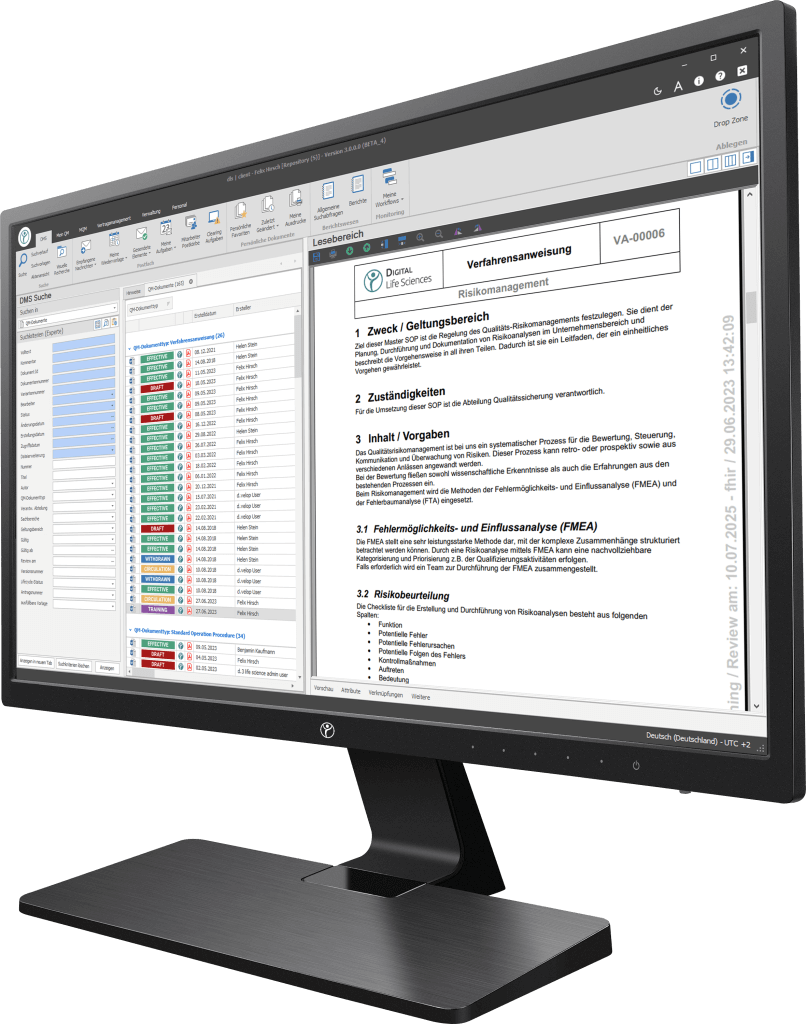Definition of the term (“What is a digital personnel file?”)
The digital personnel file, also known as an e‑file or digital employee file, is a software solution for managing and storing employee data. It replaces traditional physical folders and enables companies to store and organize all relevant information about their employees in digital form. It includes scanned documents, documents created in-house as well as information brought in from other IT systems.
What content belongs in a digital personnel file?
The contents include, for example, payrolls, vacation requests, sick leave or even job application documents. Exceptions to this are documents that could violate an employee’s personal rights. This applies, among other things, to documents that provide information about the employee’s state of health or general documents from the company doctor, such as diagnoses, treatments and also psychological reports (duty of confidentiality in accordance with Section 8 (1) of the German Occupational Safety and Health Act).
What is the goal of a digital personnel file?
The goal of a digital personnel file is to replace the traditional paper personnel file with electronic archiving. This approach speeds up administrative processes and shortens and accelerates workflows.
Your path to digitization — Discover our software
Our digitization solutions primarily address document-based processes in manufacturing, production and quality management. The basis of the dls | eQMS is a holistic ECM/DMS system. The ECM/DMS system can be connected to your existing ERP system (e.g. SAP) and, thus, map almost all document-based processes in the company.

What are the advantages of a digital personnel file?
The introduction of a digital personnel file comes with a number of advantages that companies should not ignore:
- Efficiency improvement: Manually managing paper files can be time-consuming and error-prone. The digital personnel file automates this process and enables information to be searched and updated more quickly.
- Security and data privacy: The security of employee data is of utmost importance. With a digital personnel file, companies are able to better control access to sensitive information and comply with data protection guidelines more easily.
- Space saving: Storing physical folders requires a lot of space and can be expensive. With a digital personnel file, companies do not only save space, but also costs.
- Flexibility: Employees can access their data from anywhere, which enhances flexibility and mobility in the modern work environment.
How is a digital personnel file implemented?
The introduction of a digital personnel file requires careful planning and implementation. Here are some steps companies should consider in the implementation process:
- Step 1 — Needs analysis: At the beginning, a thorough analysis of the company’s requirements should be carried out. What information needs to be stored? Which functions are required?
- Step 2 — Selection of the software: There are various software solutions on the market that offer digital personnel files. Companies should choose the offer that best fits their needs. A good example can be found here.
- Step 3 — Training of employees: Employees need to be properly trained on the new platform to ensure they can work efficiently with it.
- Step 4 — Data move: Transferring existing employee data to the digital personnel file requires careful planning in order to avoid data loss.
- Step 5 — Integration: The digital personnel file should be seamlessly integrated with existing systems like wage and salary accounting.
Conclusion
The digital personnel file is undoubtedly the future of personnel data management. It offers efficiency, security, space savings and flexibility that are essential in today’s business world. Companies that decide for the implementation will benefit from the numerous advantages.
Start your digital transformation with our powerful, modular software solutions
Frequently Asked Questions (FAQs)
Is the digital personnel file secure?
Yes, the digital personnel folder offers greater security and privacy control compared to physical folders.
What types of information can be stored in a digital personnel file?
A digital personnel file can store all information on employees, including personal data, performance reports and training documents.
Is the implementation expensive?
The cost of implementing a digital personnel file varies depending on the size of the company and the software solutions chosen, but is often more cost-effective in the long run.
How secure is the stored data from hacker attacks?
Modern digital personnel files have robust security measures to protect data from hacking. However, adherence to best safety practices is important.
Can the digital personnel file be used in different languages?
Yes, most digital personnel files support multiple languages to meet the needs of international companies.
